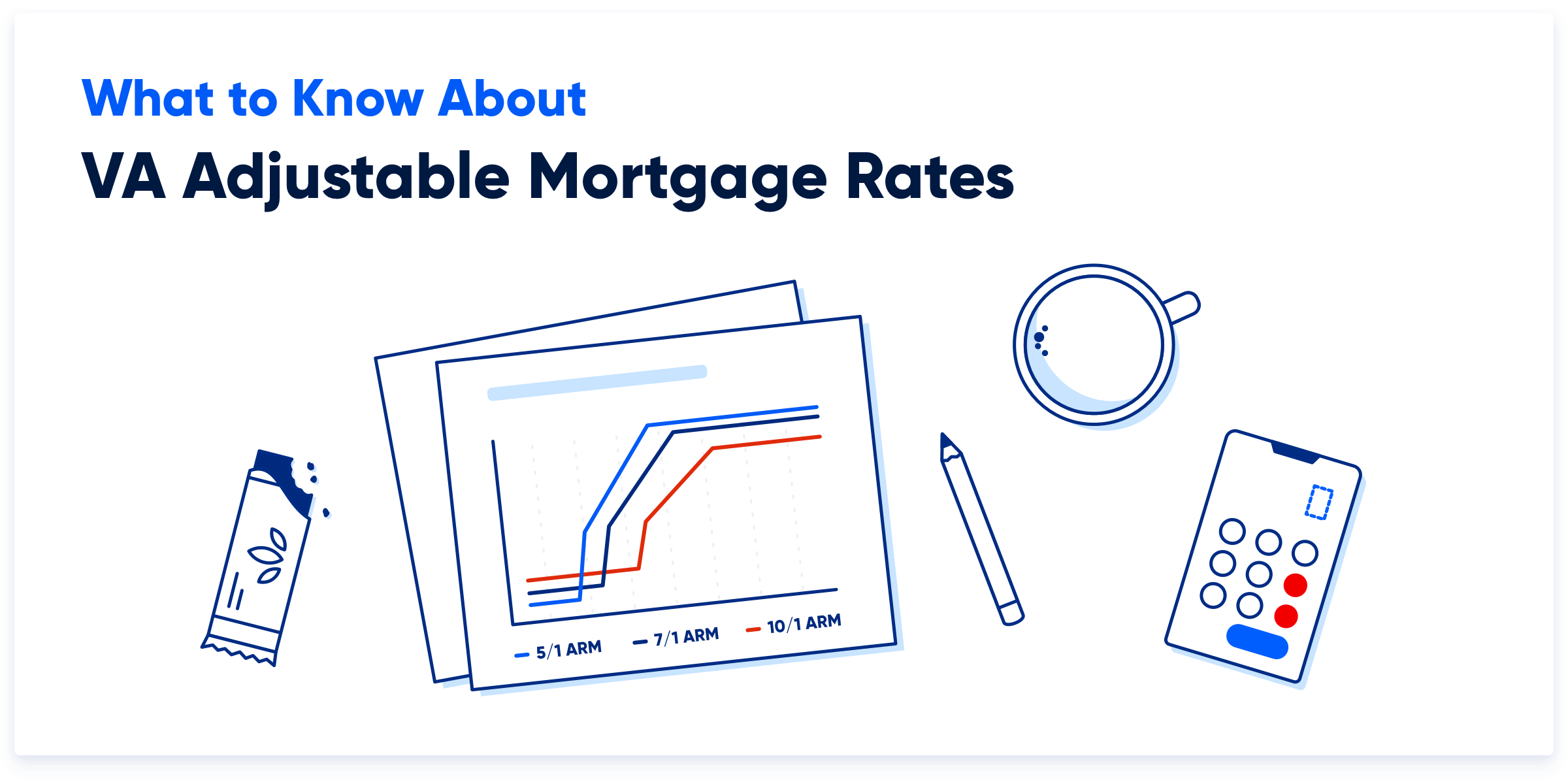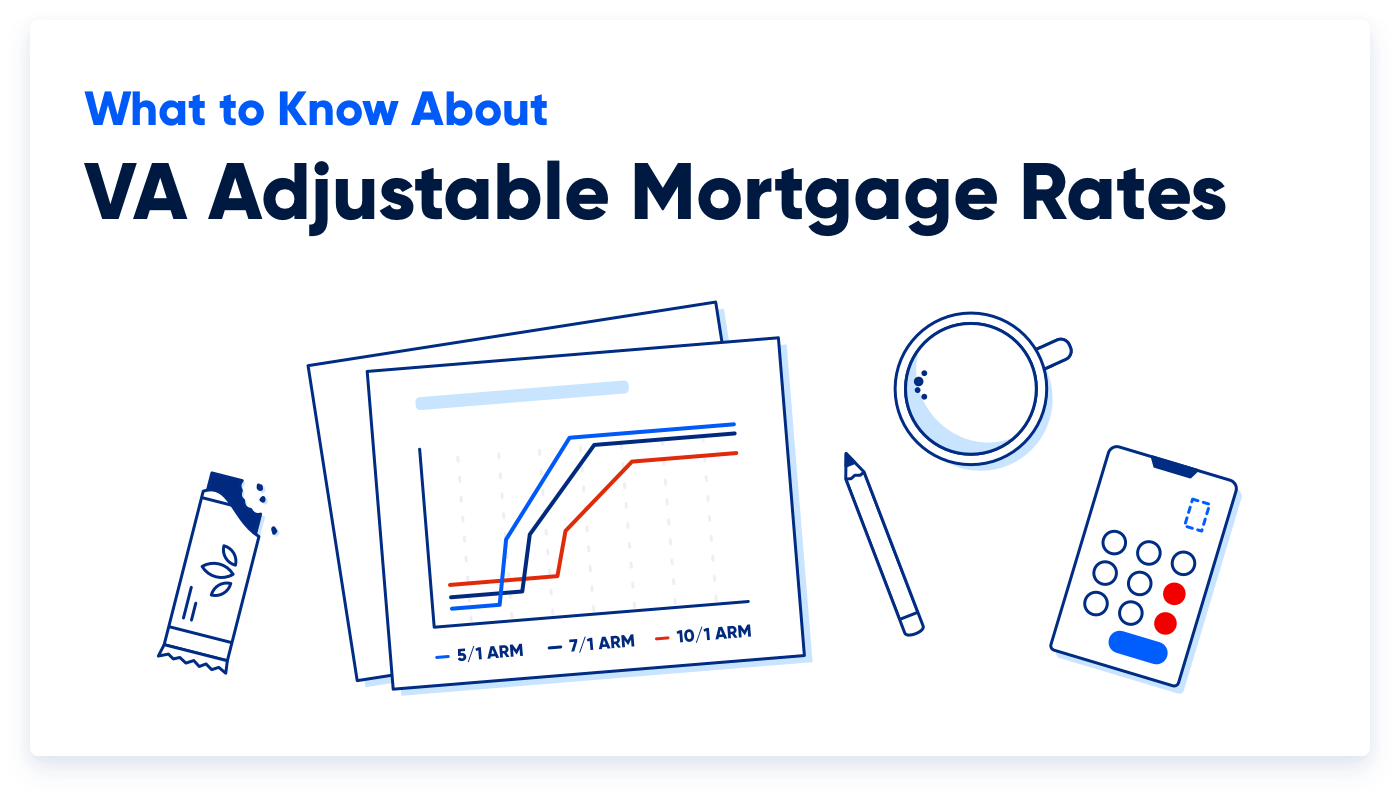

Chris is an award-winning former journalist with 15 years of experience in the mortgage industry. A national expert in VA lending and author of “The Book on VA Loans,” Chris has been featured in The New York Times, the Wall Street Journal and more.
Updated on September 26, 2023 Veterans: Check your $0 down eligibility today! Expert Reviewed At a GlanceVA adjustable-rate mortgages (ARMs) haven't seen much demand in recent years. However, rising interest rates have homebuyers searching for VA ARMs again.


The odds are you haven't heard much about VA adjustable-rate mortgages (ARMs) in the last few years. However, the popularity of this product is increasing again with the current rate environment.
A VA ARM can make good financial sense for some borrowers, especially those still serving. Below, we dive into VA ARMs and what borrowers should know about this mortgage product when purchasing a home.
A VA adjustable-rate mortgage (ARM) is a home loan backed by the US Department of Veterans Affairs with a variable interest rate that may change over time.
VA borrowers actually have a built-in advantage when it comes to ARMs. Government-sponsored loan programs are more restrictive, which minimizes risk for Veterans and military families without limiting their options. However, there’s inherently more risk in an ARM than with a fixed-rate mortgage, which has the same interest rate for the life of the loan.
But ARMs might be a savvy fit for homebuyers who don’t plan on staying in one place for too long. And if anyone knows about frequent relocation, it’s military homebuyers.
Breaking down what all affects a VA ARM loan can help you as a borrower understand how your specific loan works. Here is a brief overview of what makes up a VA adjustable-rate mortgage:
It's important to note that the terms and conditions of VA adjustable-rate mortgage loans can vary among lenders, so borrowers should carefully review and understand the specific terms offered by their chosen lender before committing to a loan.
VA adjustable-rate mortgages offer flexibility and potential advantages for many homebuyers. There are several types of ARMs for VA loans to help meet borrowers' needs.
| ARM Type | Description |
|---|---|
| 5/1 | Provides a fixed interest rate for the first five years, offering stability and predictable payments. After the initial period, the rate adjusts annually. It suits those planning to sell or refinance within a few years or those expecting changes in income or financial situations. |
| 7/1 | With a longer fixed-rate period of seven years, this loan provides an extended period of payment stability. After seven years, the interest rate adjusts annually. It's ideal for those who desire a longer initial fixed-rate and anticipate future changes or increased financial stability. |
| 10/1 | Offers the longest fixed-rate period, providing a full decade of predictable payments. After the initial ten years, the interest rate adjusts annually. It appeals to borrowers seeking long-term stability who may have confidence in their future financial prospects. |
It's important for borrowers to consider their unique circumstances and financial goals when choosing a VA ARM. Veterans United only finances fixed-rate mortgages with 15, 20, 25 or 30-year terms. We currently do not offer adjustable-rate mortgages. Consulting with a knowledgeable lender can help borrowers select the most suitable option based on their needs and financial outlook.
VA ARM loans are generally offered as hybrid loans. These have a fixed interest rate for a certain period before becoming eligible for annual adjustments. This period allows homeowners to settle into their new property without worrying about interest rate fluctuations.
Once the initial fixed-rate period ends, the loan transitions into an adjustable rate. The interest rate is then recalculated at predetermined intervals, such as annually or semi-annually.
For example, a 5/1 VA hybrid ARM features a fixed interest rate for five years and then reverts to the traditional setup. That period of fixed interest gives borrowers an initial degree of certainty regarding their payment.
For homeowners who expect to move or refinance before the adjustable period begins, VA hybrid ARMs can be an attractive option. They provide an opportunity to enjoy the benefits of a lower fixed rate initially while taking advantage of potential market changes or financial growth.
» CALCULATE: Calculate your VA Loan savings
When considering a VA adjustable rate mortgage, there are requirements borrowers need to meet. Here's a list of common financial requirements lenders look for when trying to get a VA ARM:
It's worth noting that these requirements can vary between lenders, and some lenders may have additional criteria or overlays. Borrowers must also meet VA eligibility and minimum property requirements. Working with a knowledgeable VA-approved lender is crucial to understanding and meeting the requirements.
Fixed-rate mortgages feature a consistent interest rate for the life of the loan. If you lock and close at 6.75 percent, you'll have that same rate 15 or 30 years down the road (provided you don't refinance). There are clear advantages, namely the certainty that your rate won't change despite what's happening in the overall economic environment.
The flip side is that if interest rates fall sharply. Your fixed rate might wind up being higher than what many new homebuyers are enjoying. At that point, the only way to capitalize on those lower rates is to refinance, which will cost you money.
Calculating VA adjustable-rate mortgage payments can be straightforward and offers potential advantages for borrowers. Here is a list of steps Veterans United has complied to help with your ARM monthly payment:
1. Start by gathering the necessary loan details: This includes the loan amount, the interest rate during the fixed-rate period, the length of the fixed-rate period and the adjustment caps specified in the loan terms.
2. Calculate the fixed-rate payment: To calculate this payment, use a standard loan payment formula that takes into account the loan amount, fixed interest rate and loan term.
3. Understand the adjustment period: Take note of the adjustment period specified in the loan terms, which indicates how often the interest rate and subsequent payments may change.
4. Prepare for rate adjustments: As the interest rate adjusts, it's important to be aware of the adjustment caps and how much your rate can increase or decrease in each period.
5. Monitor market changes: While adjustments introduce the potential for rate changes, it's essential to stay informed about market conditions. Keeping an eye on interest rate trends allows you to anticipate potential payment changes and plan accordingly.
When calculating VA ARM payments, it's advisable to consult with a qualified VA lender or use a VA mortgage calculator tailored to adjustable-rate mortgages. These resources can help you estimate monthly payments accurately and better understand how your payments may fluctuate over time.
See What You Qualify ForAnswer a few questions below to speak with a specialist about what your military service has earned you.

Chris Birk is the author of “The Book on VA Loans: An Essential Guide to Maximizing Your Home Loan Benefits.” An award-winning former journalist, Chris writes about mortgages and homebuying for a host of sites and publications. His analysis and articles have appeared at The New York Times, the Wall Street Journal, USA Today, ABC News, CBS News, Military.com and more. More than 300,000 people follow VA Loans Insider, his interactive VA loan community on Facebook.
About Our Editorial Process
Veterans United is recognized as the leading VA lender in the nation, unmatched in our specialization and expertise in VA loans. Our strict adherence to accuracy and the highest editorial standards guarantees our information is based on thoroughly vetted, unbiased research. Committed to excellence, we offer guidance to our nation's Veterans, ensuring their homebuying experience is informed, seamless and secured with integrity.
The VA funding fee is a governmental fee required for many VA borrowers. However, some Veterans are exempt, and the fee varies by VA loan usage and other factors. Here we explore the ins and outs of the VA funding fee, current charts, who's exempt and a handful of unique scenarios.
Can Your Mortgage Be Denied After Preapproval? Updated on April 15, 2024It is possible for you to get denied for a home loan after being preapproved. Find out why this may happen and what you can do to prevent it.